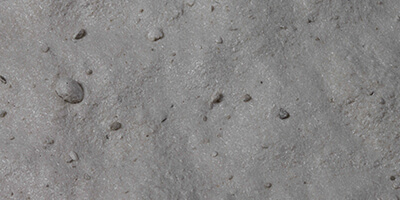Industrial Products
The by products that are being generated in various process plants such as Phosphoric Acid Plant, Sulphuric Acid Plant are value added and marketed as Industrial inputs which are utilised in Cement and Aluminium Industries, Detergents & other chemical processing industries.
-

SPIC Gypsum : Phospho Gypsum – Industrial Grade
-

SPIC ALF-96 (Aluminium Fluoride)
-

SPIC Silica
-

TFL ACL : Ammonium Chloride (N 25%)


SPIC Gypsum : Phospho Gypsum – Industrial Grade
SPIC Gypsum is a by-product from Greenstar’s phosphoric acid manufacturing plant.
 APPLICATION
APPLICATION
Agricultural use
- Gypsum works as an agent to remove saline or alkaline ingredients in the soil and acts more or less like manure.
For industrial use
- Gypsum is used to manufacture Gypsum boards. In the cement industry, gypsum is used to manufacturing lime. Gypsum is also used in manufacturing Plaster of Paris.
SPECIFICATION
- White crystalline powder
- SPIC Gypsum is an ideal soil conditioner and a rich source of calcium (23%) and sulphur (18%). CaSO4, 2H20 90%, T – P2O5 0.50 %


SPIC ALF-96 (Aluminium Fluoride)
Aluminium fluoride (AlF3) is an inorganic compound used primarily in the production of aluminium. This colorless solid can be prepared synthetically but also occurs in nature.
Description
It is used in the production of aluminium metal. Aluminium fluoride is an important additive for the production of aluminium by electrolysis. Together with cryolite, it lowers the melting point to below 1000 °C and increases the conductivity of the solution. It is into this molten salt that aluminium oxide is dissolved and then electrolyzed to give bulk Al metal.
When used with zirconium fluoride, aluminium fluoride is an ingredient for the production of fluoroaluminate glasses. It is also used to inhibit fermentation. It is a sputtering target for preparation of low index films.
Greenstar’s AlF3 process involves reaction of Aluminium Hydroxide with Hydro Fluosilicic acid. This is later filtered to remove Silica. The high purity aluminium fluoride is then crystallized and dried.
Greenstar’s aluminium fluoride is a dependable input for major aluminium producers of India and the world like Hindalco, Dubal, Stella and Foundry Service.
SPECIFICATION
| Property | Unit | Standard purity | High purity |
|---|---|---|---|
| Purity as Alf3 | % ww | 96.0 Min | 96.0 Min |
| Loss on Ignition | % ww | 1.0 Max | 1.0 Max |
| Silica as SiO2 | % ww | 0.12 Max | 0.04 Max |
| Phosphates as P2O5 | % ww | 0.015 Max | 0.015 Max |
| Iron as Fe2O3 | % ww | 0.015 Max | 0.015 Max |
| Bulk Density | GM/CC | 0.70 Min | 0.70 Min |


SPIC Silica
Silica, also known as Silicon dioxide (from the Latin silex), is a chemical compound that is a dioxide of silicon with the chemical formula SiO2. It has been known since ancient times.
Description
Silica is most commonly found in nature as quartz, as well as in various living organisms. Silica is one of the most complex and most abundant families of materials, existing both as several minerals and being produced synthetically.
In the chemical industry, Silica is also used as a filter aid in phosphoric acid plants to improve recovery efficiency. The Greenstar process involves reaction of Aluminium Hydroxide with Hydro Fluosilicic acid followed by filtration to recover silica.
Major customers include the Vedanta Resources group and the Coromandel companies.
SPECIFICATION
| Property | Unit | Standard purity |
|---|---|---|
| Product colour | White | |
| Bulk Density | g/cc | 0.50 Max |
| Free Moisture | % WW | 40-50% |
| Analysis on Dry basis | ||
| Bulk Density | % WW | 80% Min |
| Bulk Density | % WW | 5 % Max |


TFL ACL : Ammonium Chloride (N 25%)
Ammonium Chloride fertilizer is manufactured by M/s. Tuticorin Alkali Chemicals and Fertilizers Ltd. and is marketed by Greenstar Fertilizer Ltd.
 APPLICATION
APPLICATION
As per Fertiliser schedule recommendation, requirement of ACL is worked out and applied as basal and top dressing for all crops.
Description
- Ammonium Chloride contains 25 percent Nitrogen. Besides Nitrogen, Chlorine present in Ammonium Chloride is also an important micro nutrient. Improves root formation and ensures quality product output. The entire Nitrogen is present in Ammonical form.
- Ammoniacal Nitrogen is not lost by leaching, since NH4 is fixed by soil clay and humus complex. On application to the field, Nitrogen will be released as and when the demand arises from the crop.
- When Ammonium Chloride is applied as basal or top dressing for cultivated crops, loss of nitrogen is very less. Consequently, more N will be utilized by the crop, thereby fertilizer use efficiency is increased.
- Ammonium Chloride fertilizer application is recommended for saline and alkaline soils.
- It is also a suitable Nitrogenous fertilizer for application in low-lying areas where paddy and other crops are cultivated by farmers.
- Chlorine present in Ammonium Chloride gives resistance to some pests and diseases.
- Ammonium Chloride is less hygroscopic than other fertilizers which means the fertilizer has a fairly long life in storage.
- The chloride radical in Ammonium Chloride frees Phosphorous, Potash, Magnesium, Silica, Iron etc. from the soil.
SPECIFICATION
| S. No. | Composition | Content | |
| 1. | Moisture per cent by weight | Maximum | 2.0% |
| 2. | Ammoniacal nitrogen per cent by weight, | Minimum | 25.0% |
| 3. | Chloride other than ammonium chloride (as NaCI) per cent by weight, (on dry basis) | Maximum | 2.0% |



